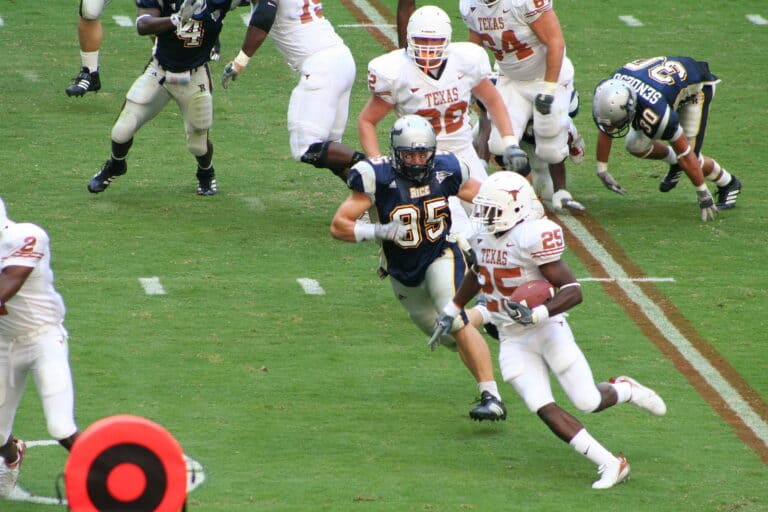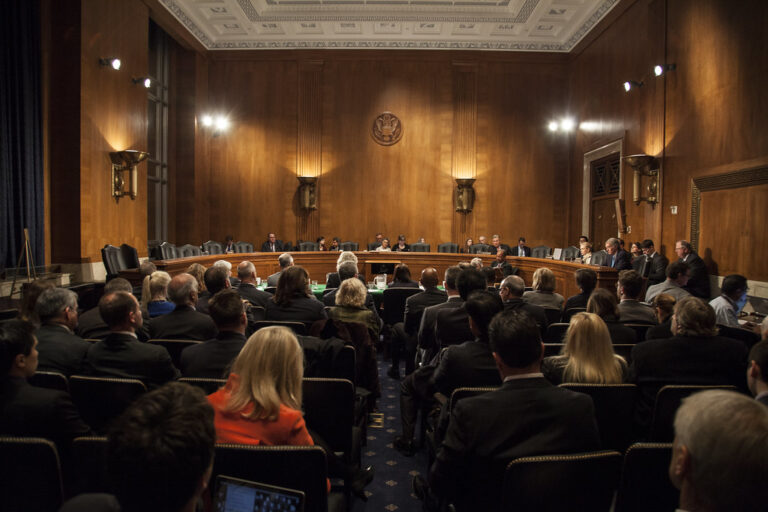
Andrew Strom is a union lawyer based in New York City. He is also an adjunct professor at Brooklyn Law School.
The Trump NLRB has held that an employer may withdraw recognition from a union even if the union has the support of a majority of workers at the time of withdrawal. This decision is yet another reminder that the Trump appointees have repeatedly chosen to protect the interests of employers rather than the rights of workers. And, it’s no surprise that the justifications they offered for the ruling don’t add up.
In Johnson Controls, over a vigorous dissent from Board Member McFerran, the NLRB overruled its 2001 decision in Levitz Furniture of the Pacific regarding “anticipatory” withdrawal of recognition. Under long settled law, a union’s majority status may not be challenged during the first three years of a collective bargaining agreement. But, if, near the end of a three-year contract, the employer gets evidence that the union has lost majority support, the employer has been allowed to suspend bargaining for a new agreement and notify the union of its intent to withdraw recognition upon the expiration of the contract. Before Johnson Controls, when the union was notified of the anticipatory withdrawal of recognition, it would have an opportunity to shore up its majority status, and the employer would act at its peril if it followed through with the withdrawal. In Levitz, the Board explained that “an employer who withdraws recognition from a majority union, even in good faith, invades his employees’ Section 7 rights every bit as much an employer who unwittingly extends recognition to a minority union.” In Johnson Controls, the Board majority held that an employer may withdraw recognition based on a disaffection petition signed by a majority of workers regardless of how many workers have changed their minds between signing the disaffection petition and the date of the withdrawal.
The facts in Johnson Control illustrate how the Trump Board was “solving” a nonexistent problem. The workers were represented by the United Auto Workers (UAW). Two weeks before their contract expired, two workers presented management with a union disaffection petition signed by 83 of the 160 workers in the bargaining unit. The employer immediately notified the UAW of its anticipatory withdrawal of recognition, but refused to provide the union with a copy of the petition. The union began soliciting new authorization cards from all employees, and six of the workers who signed the disaffection petition signed new authorization cards. The Union informed the employer that it had majority support and offered to compare evidence. The employer refused to meet and instead withdrew recognition and immediately announced a wage increase and benefit improvements. Under the old rule, the employer’s conduct would have been illegal because, as the UAW had cautioned the employer, when the contract expired the disaffection petition no longer had majority support.
The Trump appointees framed the issue as employees “with no improper influence or assistance from management” presenting their employer with evidence that they do not wish to be represented by their union. But, this turns a blind eye to the reality that improper influence or assistance from management is often hard to prove. Proving that management promised to reward workers who circulated the anti-union petition requires one of the workers to turn down the reward and act as a whistleblower. The Trump appointees further assert that the old rule gave unions an “incentive” to provoke employers to anticipatorily withdraw recognition, so that they could secretly gather counter-evidence to file an unfair labor practice to obtain an affirmative bargaining order against the employer. This claim is absurd. No union wants to lose bargaining rights and try to win them back through extended litigation. And a bargaining order issued years after the fact hardly puts a union in a position to rebuild support inevitably lost in the interim.
The Trump Board Members offered three reasons for their new rule and none withstand scrutiny. First, they asserted that the old rule failed to safeguard employee free choice by “ignor[ing] the fact that dual signers have expressed both support for and opposition to union representation within a brief period of time.” But, the new rule ignores any pro-union sentiments expressed by workers either before or after they sign a disaffection petition.
The second rationale is even harder to take seriously. The Board majority claimed that “existing precedent does not effectively promote labor relations stability.” The argument here is that if an employer receives a disaffection petition signed by a majority of workers, it may withdraw recognition without realizing that its disaffection evidence had been superseded. Of course, that’s because the old rule was designed to promote labor relations stability by discouraging employers from withdrawing recognition unless they were certain that the union had lost majority support. In Levitz, the Board provided employers with a risk-free alternative to an anticipatory withdrawal of recognition. Instead of withdrawing recognition, employers could file for an election to have the NLRB determine, by secret ballot, whether the union had lost majority support.
The third rationale relies on a misunderstanding of relevant legal principles. The Board majority asserted that the old rule was based on asymmetry because when workers are organizing a union, an employee must notify the union in order to revoke her authorization card, yet an employee’s signature on a disaffection petition presented to the employer can be effectively revoked without notice to the employer. In fact, the different treatment is based on common law principles. The Eighth Circuit explained why a worker must notify the union in order to revoke an authorization card more than fifty years ago: “a principal’s revocation of his agent’s authority is ineffective until communicated to the agent.” By contrast, when workers give an employer a union disaffection petition, they are not authorizing the employer to act as their agent.
In replacing a rule that encouraged employers to file for elections with a rule that encourages employers to unilaterally withdraw recognition, the Trump appointees nevertheless insisted that “[a] Board-conducted secret ballot election … is the preferred means of resolving questions concerning representation.” Under the new rule, instead of employers filing for elections (leaving the union in place in the meantime), the union must file for an election within 45 days after it receives notice of an anticipatory withdrawal in order to preserve its status. Yet, even if an election is pending, the employer may withdraw recognition once the contract expires. You might think it’s not such a big deal to require a union to prove its majority status in an election. But, as the Trump appointees admit in a footnote, “[t]ypically, a withdrawal of recognition is conduct that reasonably tends to cause employee disaffection from the union.” So, under the new rule, the election will not even come close to the Board’s aspirational “laboratory conditions,” but rather will test whether the union can win despite conduct that undermines employee support for the union.
The Trump Board Members claim that the old rule was “unworkable.” In fact, it worked to prevent an employer like Johnson Controls from closing its eyes to evidence that a majority of workers still supported the union. Instead of holding Johnson Controls accountable for violating its workers’ rights, the Trump Board has given other employers a green light to do the same.






Daily News & Commentary
Start your day with our roundup of the latest labor developments. See all
November 25
In today’s news and commentary, OSHA fines Taylor Foods, Santa Fe raises their living wage, and a date is set for a Senate committee to consider Trump’s NLRB nominee. OSHA has issued an approximately $1.1 million dollar fine to Taylor Farms New Jersey, a subsidiary of Taylor Fresh Foods, after identifying repeated and serious safety […]
November 24
Labor leaders criticize tariffs; White House cancels jobs report; and student organizers launch chaperone program for noncitizens.
November 23
Workers at the Southeastern Pennsylvania Transportation Authority vote to authorize a strike; Washington State legislators consider a bill empowering public employees to bargain over workplace AI implementation; and University of California workers engage in a two-day strike.
November 21
The “Big Three” record labels make a deal with an AI music streaming startup; 30 stores join the now week-old Starbucks Workers United strike; and the Mine Safety and Health Administration draws scrutiny over a recent worker death.
November 20
Law professors file brief in Slaughter; New York appeals court hears arguments about blog post firing; Senate committee delays consideration of NLRB nominee.
November 19
A federal judge blocks the Trump administration’s efforts to cancel the collective bargaining rights of workers at the U.S. Agency for Global Media; Representative Jared Golden secures 218 signatures for a bill that would repeal a Trump administration executive order stripping federal workers of their collective bargaining rights; and Dallas residents sue the City of Dallas in hopes of declaring hundreds of ordinances that ban bias against LGBTQ+ individuals void.